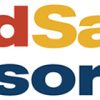When it comes to food safety and temperature monitoring, the appeal of automation is crystal clear. Why continue to depend on a costly and unreliable manual process with clipboards, binders, spreadsheets and guesswork when the latest Internet of Things (IoT) technology continuously monitors conditions and sends actionable alerts in real time?
Industry experts note that temperature sensors are the most likely IoT devices to scale throughout the enterprise. While food safety and temperature monitoring are critically important and must meet health code regulations, it is not the only information that needs to be tracked and monitored in a restaurant, grocery store or other foodservice facility.
Although the cost of IoT technology has dropped significantly, the challenge for many newcomers to IoT technology lies in building a business case that the C-suite will accept. To solidify an understanding of the value, organizations should consider the variety of critical operations that can be optimized by IoT connectivity.
Beyond installing a few smart devices IoT platforms are designed to provide a set of common but critical functionality and services—broadly, a software-based infrastructure that can be used as a utility. For IoT, this means the software platform can support interactions with distributed sensors and automation. It is the software that tracks and interprets things like temperature, humidity, energy or movement data and then integrates in a manner that can be incorporated into core business processes that are executed by staff.
The platform approach has the effect of reducing complexity, shortening the learning curve, and enabling the enterprise to focus on its core competencies, rather than getting bogged down trying to understand how to implement, use and maintain the IoT components and technology. The benefits of this approach are that it reduces time to deploy, investment and risk. The result is a business operations-focused IoT-enabled platform that abstracts the complex details, is easy to use, and intelligently focused on delivering maximum value.
For instance, consider a large supermarket chain outfitted with a variety of sensors and gateways that goes beyond monitoring cold and hot food storage temperatures. The suite of hardware and software deployed can be expanded to monitor functions such as: lighting and energy usage, HVAC conditions, customer wait times, open/closed doors, water levels, and fluid flow volume at beverage dispensers. All of this data can be integrated with other back-office software, such as employee scheduling, inventory management, business intelligence, and more, achieving a true 360-degree view of foodservice operations.
Condition tracking systems can be combined with task management functionality to ensure that data is not just monitored, but action is taken as needed. Text message (SMS) or email alerts can be set for anomalies based on customizable threshold values and complex rules. Task flow checklists can be automated, and a digital record is available to bring transparency to execution timing, stop violations, and ensure critical problems are remediated.
Ultimately, as IoT evolves, the enterprise becomes focused less on devices and infrastructure and more on platforms supporting functionality and improving customer experience. As your organization considers investment in IoT, look for solutions that go beyond hardware to encompass software platforms, applications and, most importantly, the business goals of delivering great services and products while making and saving money. Before you spend the money and effort to deploy connected things, decide how IoT will help your business increase efficiencies and provide new value propositions.





